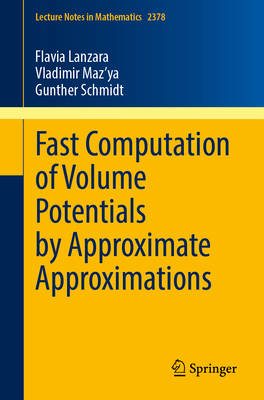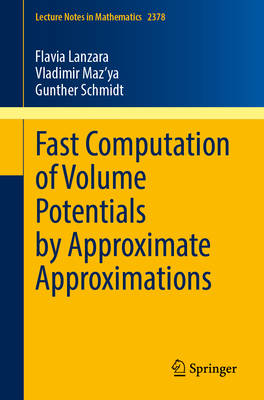
Bedankt voor het vertrouwen het afgelopen jaar! Om jou te bedanken bieden we GRATIS verzending (in België) aan op alles gedurende de hele maand januari.
- Afhalen na 1 uur in een winkel met voorraad
- In januari gratis thuislevering in België
- Ruim aanbod met 7 miljoen producten
Bedankt voor het vertrouwen het afgelopen jaar! Om jou te bedanken bieden we GRATIS verzending (in België) aan op alles gedurende de hele maand januari.
- Afhalen na 1 uur in een winkel met voorraad
- In januari gratis thuislevering in België
- Ruim aanbod met 7 miljoen producten
Zoeken
Fast Computation of Volume Potentials by Approximate Approximations
Flavia Lanzara, Vladimir Maz'ya, Gunther Schmidt
€ 129,95
+ 259 punten
Omschrijving
This book introduces a new fast high-order method for approximating volume potentials and other integral operators with singular kernel. These operators arise naturally in many fields, including physics, chemistry, biology, and financial mathematics. A major impediment to solving real world problems is the so-called curse of dimensionality, where the cubature of these operators requires a computational complexity that grows exponentially in the physical dimension. The development of separated representations has overcome this curse, enabling the treatment of higher-dimensional numerical problems. The method of approximate approximations discussed here provides high-order semi-analytic cubature formulas for many important integral operators of mathematical physics. By using products of Gaussians and special polynomials as basis functions, the action of the integral operators can be written as one-dimensional integrals with a separable integrand. The approximation of a separated representation of the density combined with a suitable quadrature of the one-dimensional integrals leads to a separated approximation of the integral operator. This method is also effective in high-dimensional cases. The book is intended for graduate students and researchers interested in applied approximation theory and numerical methods for solving problems of mathematical physics.
Specificaties
Betrokkenen
- Auteur(s):
- Uitgeverij:
Inhoud
- Aantal bladzijden:
- 264
- Taal:
- Engels
- Reeks:
- Reeksnummer:
- nr. 2378
Eigenschappen
- Productcode (EAN):
- 9783031974410
- Verschijningsdatum:
- 31/08/2025
- Uitvoering:
- Paperback
- Formaat:
- Trade paperback (VS)
- Afmetingen:
- 156 mm x 234 mm
- Gewicht:
- 390 g

Alleen bij Standaard Boekhandel
+ 259 punten op je klantenkaart van Standaard Boekhandel
Beoordelingen
We publiceren alleen reviews die voldoen aan de voorwaarden voor reviews. Bekijk onze voorwaarden voor reviews.









